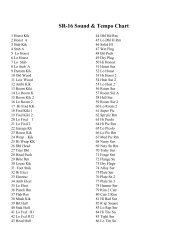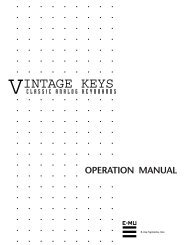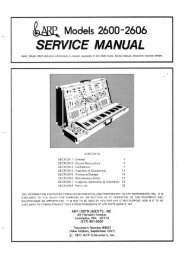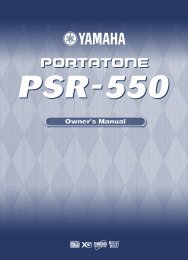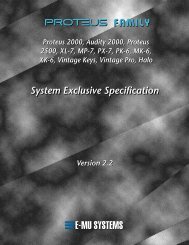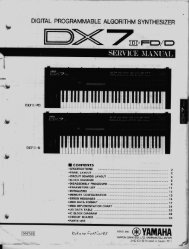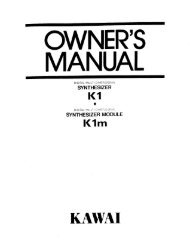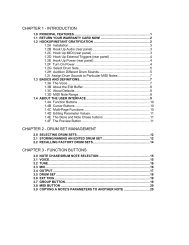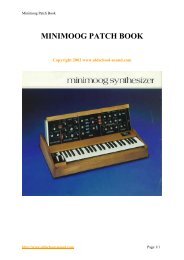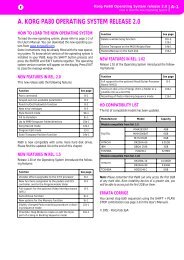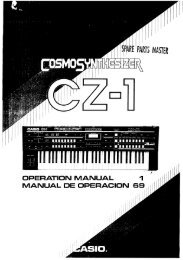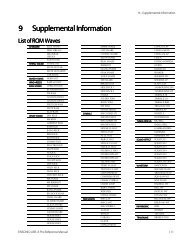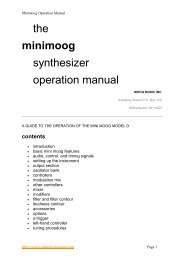Manuale italiano-inglese Oberheim-Viscount MC3000 - Synth Zone
Manuale italiano-inglese Oberheim-Viscount MC3000 - Synth Zone
Manuale italiano-inglese Oberheim-Viscount MC3000 - Synth Zone
You also want an ePaper? Increase the reach of your titles
YUMPU automatically turns print PDFs into web optimized ePapers that Google loves.
MC 3000<br />
Operating Manual<br />
1.3.5 The Numeric pad and the mode keys.<br />
Moving to the right, we now come to the NUMERIC PAD, a<br />
combination of keys for selecting the patch number, also used to<br />
set a parameter at a given value directly, without using the<br />
encoder or the INC and DEC keys.<br />
When the value set is too high, the instrument will automatically<br />
set the maximum permitted value for the parameter.<br />
For example, when selecting a program change, for which the<br />
range is 0 to 127, if the user types the number 150 the machine<br />
will automatically set 127. Similarly, when the number typed is too<br />
low, the instrument will automatically set the minimum value<br />
permitted for that parameter. The Numeric pad is a real<br />
alphanumeric keyboard, and is thus also used for writing.<br />
The Numeric pad contains the BANK key for selecting the bank in<br />
which the patch to be recalled is located. This selection does not always start from bank<br />
A, but starts from the bank current when the operation is carried out.<br />
Finally we come to the ENTER key used to confirm the selection or confirm the name<br />
typed; each patch typed in the Numeric pad, each value set in the Numeric pad must<br />
always be confirmed with the ENTER key.<br />
BANK Key<br />
ENTER Key<br />
The last set of buttons on the right is the Mode set, consisting of 4 LED buttons allowing<br />
the user to select one of the instrument's 4 operating modes, which are:<br />
• PROGRAM MODE: Main operating mode; in this mode, the user can select the<br />
programs (patches) and use all the instrument's real-time functions.<br />
• EDIT MODE: Programming mode; this model allows the user to create and modify all<br />
the parameters in a program (patch).<br />
• CHAIN MODE: Concatenation; mode allowing the user to create and perform 128<br />
different chains of several patches.<br />
• UTILITY: This mode allows the user access to all the instrument's auxiliary functions<br />
and the creation of user tables.<br />
78



